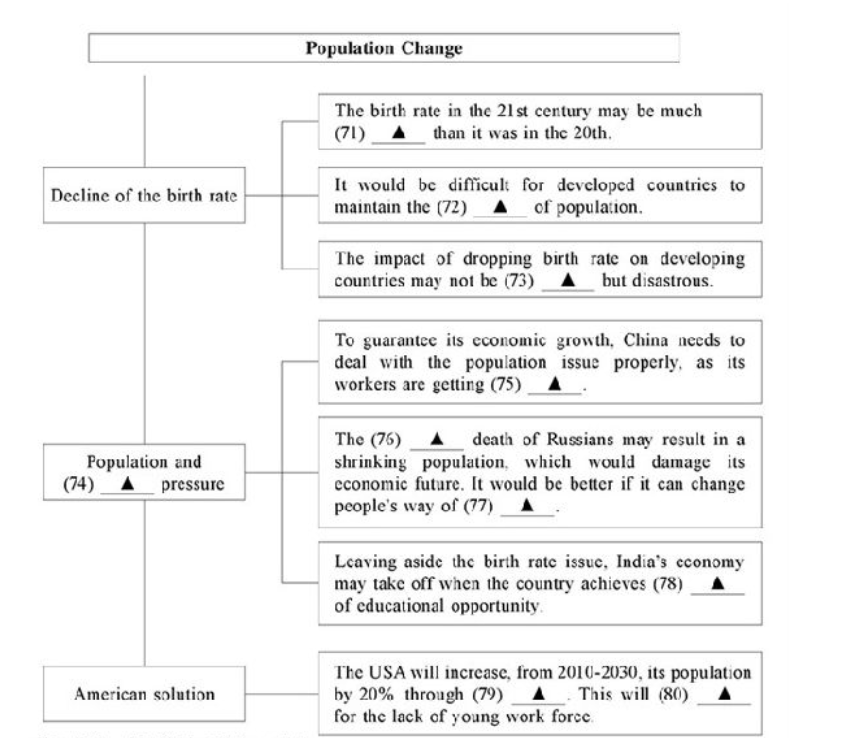Population Change
Why is the world's population growing? The answer is not what you might think. The reason for the explosion is not that people have been reproducing like rabbits, but that people have stopped dropping dead like flies. In 1900, people died at the average age of 30.By 2000 the average age was 65.But while increasing health was a typical feature of the 20 thcentury, declining birth rate could be a defining one of the 21 st.
Statistics show that the average number of births per woman has fallen from 4.9 in the early 1960s to 2.5 nowadays. Furthermore, around 50% of the world's population live in regions where the figure is now below the replacement level(i.e.2.1 births per woman)and almost all developed nations are experiencing sub-replacement birth rate. You might think that developing nations would make up the loss(especially since80% of the world's people now live in such nations), but you'd be wrong. Declining birth rate is a major problem in many developing regions too, which might cause catastrophic global shortages of work force within a few decades.
A great decline in young work force is likely to occur in China, for instance. What does it imply? First, China needs to undergo rapid economic development before a population decline hits the country. Second, if other factors such as technology remain constant, economic growth and material expectations will fall well below recent standards and this could invite trouble.
Russia is another country with population problems that could break its economic promise. Since 1992 the number of people dying has been bigger than that of those being born by a massive 50%,Indeed official figures suggest the country has shrunk by 5% since 1993 and people in Russia live a shorter life now than those in 1961.Why is this occurring? Nobody is quite sure, but poor diet an above all long-time alcoholism have much to do with it. If current trends don't bend. Russia's population will be about the size of Yemen's by the year 2050.
In the north of India, the population is booming due to high birth rates, but in the south, where most economic development is taking place, birth rate is falling rapidly. In a further twist, birth rate is highest in poorly educated rural areas and lowest in highly educated urban areas. In total, 25% of India's working-age population has no education. In 2030, a sixth of the country's potential work force could be totally uneducated.
One solution is obviously to import foreign workers via immigration. As for the USA, it is almost unique among developed nations in having a population that is expected to grow by 20% from 2010-2030. Moreover, the USA has a track record of successfully accepting immigrants. As a result it's likely to see a rise in the size of its working-age population and to witness strong economic growth over the longer term.

 粤公网安备 44130202000953号
粤公网安备 44130202000953号